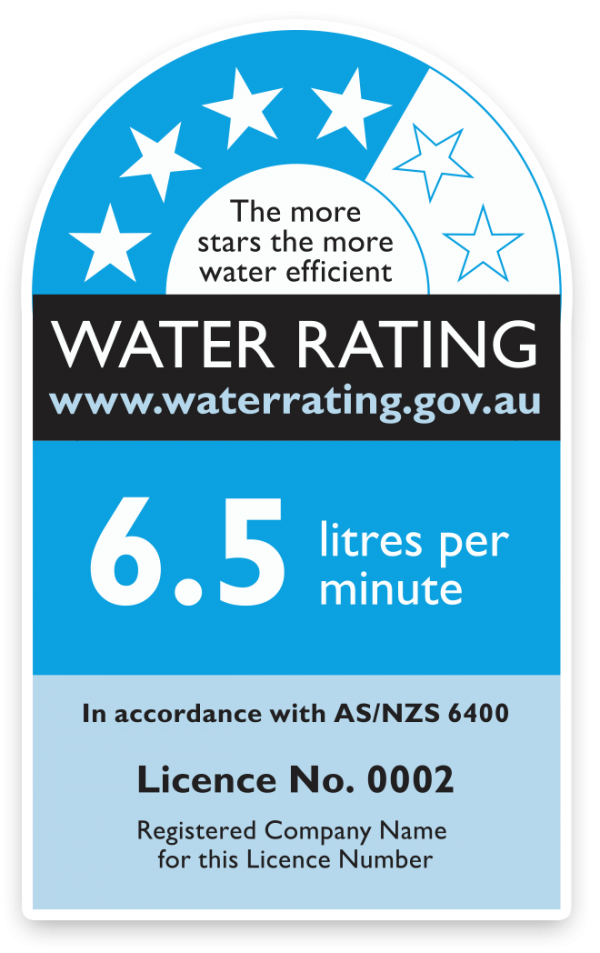Water Efficiency Labelling and Standards scheme
The Water Efficiency Labelling and Standards (WELS) scheme is a national program that mandates registration and water efficiency labelling of certain designated water-using and water-saving products supplied across Australia – showers, taps, flow controllers, toilets, urinals, clothes washing machines and dish washing machines. The WELS scheme aims to reduce demand for high quality drinkable Australian water by providing consumers with product specific water efficiency information at the point of sale and promoting the adoption of more water efficient technologies.
The three objectives of the scheme captured in the WELS Act are:
1. to conserve water supplies by reducing water consumption.
2. to provide information for purchasers of water-use and water-saving products.
3. to promote the adoption of efficient and effective water-use and water-saving technologies.
The WELS scheme achievements against the three objects of the WELS Act include:
Water savings: The WELS scheme has contributed to observed reductions in water consumption, and the conservation of water supplies across Australia. Modelling undertaken in 2008, 2014 and 2018 estimates a consistent trend in projected increased water savings attributed to the scheme. The 2018 report estimated a saving of approximately 122 Gigalitres (GL) in 2018, increasing to 206 GL being saved in 2030. Since commencement of the WELS scheme in 2005, cumulatively, more than 2,928 GL of water could be saved by 2030. The economic value of savings attributable to the scheme as of 2018 are estimated up to $1.13 billion ($0.78 billion USD). The forecast to 2030, estimates the economic value of savings is expected to increase to $2.12 billion ($1.46 billion USD).
Consumer information: The WELS scheme provides information to consumers which is highly visible, well-used and trusted. Market research indicates that consumers are actively using water efficiency information provided under the scheme to inform decisions about what products to purchase. Research undertaken in 2014 shows that 87 per cent of consumers recognise the WELS water efficiency label – a 34 per cent increase from data collected in 2008. In addition, 83 per cent of consumers have indicated that they view the WELS scheme as ‘very’ or ‘quite’ credible, and because it is a government-regulated initiative they have confidence in the information provided. Consumers actively look for and expect to see water efficiency labelling on various types of water-using and water-saving products.
Adoption of water-using and water-saving products: The market research referred to above indicates that water efficiency is the highest or second highest consideration for consumers in their purchasing decisions for products covered under the WELS scheme. This is reflected in a general shift towards both greater availability and sales of more water efficient products since the introduction of the scheme. Sales of inefficient clothes washing machines with a WELS 2.5-star rating or lower have reduced substantially since 2007, at the same time as sales of WELS 3 star and above machines have grown. Similarly, in 2007, less efficient dish washing machines with a WELS 3-star rating and below accounted for nearly 90 percent of all sales; however, by 2013 these dishwashing machines accounted for less than 20 per cent of all sales. At the beginning of 2023, more than 66% of clothes washing machines and 85% of dishwashers registered with the WELS scheme, have a WELS 4-star rating or greater. This shift towards greater availability and sales of more water efficient products is also reflected in the plumbing products registered under the scheme, for example more than 93% of toilets and 92% of taps have a WELS 4-star rating or greater.
The WELS scheme also provides a range of other benefits, including:
· a national reference point on which to base other schemes, such as rebate and incentive programs, regulations and policies, reducing the extent of regulatory duplication amongst different Australian state and territory governments
· consumers being able to make more informed decisions, and achieve financial savings resulting from using more water efficient products
· financial savings for consumers due to reductions in water consumption and associated reductions of electricity or gas use from use of more water efficient products
· industry having marketing benefits and competitive advantage where manufacturing or promoting highly water efficient products
· society benefiting from the more efficient use, or freeing up of, public resources or revenue – including from greater water availability, and lower cost water service provision due to less need for major investments
· improved ability to manage water resources in periods of scarcity and deferral of investment in water supply infrastructure
· the environment benefiting from water savings that contributes to environmental improvements and reductions in greenhouse gas emissions
External source(s)


